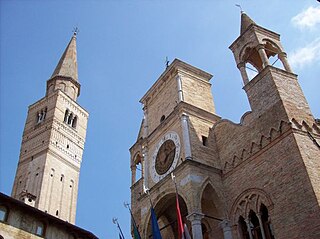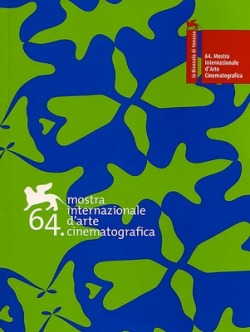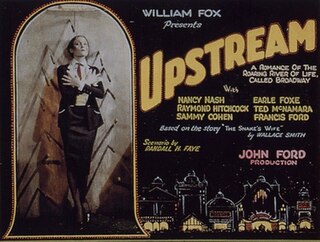History
Created in 1982 as a collaborative effort between La Cineteca del Friuli in Gemona and the Cinemazero filmclub in Pordenone, the Giornate del Cinema Muto, aka Pordenone Silent Film Festival, has established itself as the leading international event dedicated to the preservation, diffusion, and study of the first thirty years of cinema.
The first retrospective, focussing on French comedian Max Linder, was organized as a true labor of love, with a shoestring budget and an audience of eight patrons. Today, the screenings are attended by several hundreds of people from across the world, ranging from academics, archivists and critics to private enthusiasts and collectors, who gather for a weekly marathon of screenings.
From 1985 to 1998, the festival's venue was the Cinema Verdi in Pordenone, a picture palace from the great post-war era of Italian cinema-going. Following the local authorities’ decision to demolish the Verdi, in 1999 the Giornate moved to the Teatro Zancanaro in Sacile (15 km from Pordenone), a well-equipped modern auditorium behind the older facade of a theatre which has been presenting films since 1911. In October 2007 the festival moved back to Pordenone and to the new Verdi theatre.
Since its inception, the Pordenone Silent Film Festival has covered all aspects of early film history, ranging from the classical Hollywood cinema to avant-garde and animation. “These gatherings,” write Kristin Thompson and David Bordwell in Film History: An Introduction, “have revolutionized the study of silent cinema... The Silent Film Festival has helped emphasize how crucial the preservation and availability of early films are to our knowledge of cinema history.”
Over the years of its existence, the festival has stimulated and assisted the process of recovering and restoring the film heritage, which is the vital role of the world's film archives. Thanks to the extraordinary periodic meeting of expertise at the Giornate, lost films have been rediscovered, orphan reels have been identified, and chance personal encounters have led to restoration projects.

Pordenone is a city and comune (municipality) in the Italian region of Friuli-Venezia Giulia, the capital of the Regional decentralization entity of Pordenone.
David Robinson is an English film critic and author. He is a former film critic for both the Financial Times and The Times and wrote the official biography of Charlie Chaplin.

Grigori Mikhailovich Kozintsev was a Soviet theatre and film director, screenwriter and pedagogue. He was named People's Artist of the USSR in 1964. In 1965 he was a member of the jury at the 4th Moscow International Film Festival. Two years later he was a member of the jury of the 5th Moscow International Film Festival. In 1971 he was the president of the jury at the 7th Moscow International Film Festival.
David John Francis is a British film archivist. He was the second curator of the UK's National Film and Television Archive from 1974 until 1989, when he was succeeded by Clyde Jeavons. Francis went on to become the Chief of the Motion Picture, Broadcasting and Recorded Sound Division at the Library of Congress.

The 64th annual Venice International Film Festival, held in Venice, Italy, from 29 August to 8 September 2007.

Sparrows is a 1926 American silent drama film about a young woman who rescues a baby from kidnappers. The film, which was originally titled Scraps, starred and was produced by Mary Pickford, who was the most powerful woman in Hollywood at the time.

Upstream is a 1927 American comedy film directed by John Ford. A "backstage drama", the film is about a Shakespearean actor and a woman from a knife-throwing act. The film was considered to be a lost film, but in 2009 a print was discovered in the New Zealand Film Archive.

The San Francisco Silent Film Festival is a film festival first held in 1996 and presented annually at the Castro Theatre in San Francisco, California, United States. It is the largest silent film festival in the United States, although the largest silent film festival in the world remains the Giornate del cinema muto in Pordenone, northern Italy.

The New Babylon is a 1929 silent historical drama film written and directed by Grigori Kozintsev and Leonid Trauberg. The film deals with the 1871 Paris Commune and the events leading to it, and follows the encounter and tragic fate of two lovers separated by the barricades of the Commune.

Captain Blood is a 1924 American silent adventure film based on the 1922 novel Captain Blood, His Odyssey by Rafael Sabatini. Produced and distributed by the Vitagraph Company of America, the film is directed by David Smith, brother of Vitagraph founder Albert E. Smith. Early silent film hero J. Warren Kerrigan stars along with resident Vitagraph leading actress Jean Paige, who was also married to Albert E. Smith.
Jan Olsson is a Swedish film scholar, professor of cinema studies and former head of department at Stockholm University. He has been a visiting professor at the University of Southern California, UCLA, Northwestern University, Utrecht University and the City University of Hong Kong. Olsson is the founding editor of John Libbey's book series Stockholm Studies in Cinema, and the founding editor of the scholarly journal Aura Film Studies Journal. Along his trajectory of archival research, he has found copies of two previously lost early films, Buster Keaton's The Cook and Fatty Arbuckle's A Reckless Romeo. He currently leads the research project “From Business Commodities to Revered Cultural Heritage: Global Media, Vernacular Strategies, and Cultural Negotiations,” funded by a grant from Vetenskapsrådet . He is also responsible editor of Acta Universitatis Stockholmiensis' cinema studies series—distributed by Stockholm University library.

Beauty's Worth is a 1922 American romantic comedy drama film directed by Robert G. Vignola, starring Marion Davies as an unsophisticated Quaker who ventures to a seaside resort, meets a Bohemian artist, and falls in love.

Robinson Crusoe is a 1902 French silent film directed by Georges Méliès, based on Daniel Defoe's 1719 book of the same name.
The Story of a Little Parisian is a 1928 silent film directed by Augusto Genina. It was made as a co-production between France, Germany and Italy. The film was created in conjunction with Maurice Yvain's operetta Yes; a stage work which shares the same story as the film and which starred French singer and actress Arletty as Totte. Both works simultaneously premiered in Paris on January 26, 1928.
Eccentrism was an avant-garde artistic movement in the Soviet Union active during the 1920s. In the early 1920s it was a movement in theatre associated with the factory of the eccentric actor (FEKS), which rejected traditional theatrical acting in favor of a modern and physical performance incorporating shocking stunts, derived from the circus and other popular entertainment. A school of eccentrist cinema emerged from the theatre group in the later 20s. Sergei Eisenstein was briefly associated with the movement.

Le Rosier miraculeux, released in the US as The Wonderful Rose-Tree and in the UK as The Magical Rose Tree, is a 1904 French silent trick film directed by Georges Méliès.
J.B. Kaufman is a film historian and author who specializes in Disney animation history and silent films. His books include The Fairest One of All, Pinocchio: The Making of the Disney Epic, and Walt Disney's Mickey Mouse. He is the consulting historian for The Walt Disney Family Museum, and has also written for the Library of Congress and Cartoon Research. Kaufman is currently working with Margaret Barnes on a biography of the latter's grandfather Clarence Nash, the original voice of Donald Duck.
The Triple-Headed Lady is a 1901 French silent trick film by Georges Méliès. It was sold by Méliès's Star Film Company and is numbered 334 in its catalogues.
Kire lained is a 1930 Estonian-German action and drama film directed by Vladimir Gajdarov.
Yes is an operetta in three acts with music by composer Maurice Yvain, lyrics by Albert Willemetz, and a book by René Pujol and Pierre Souvaine. It was written as a starring vehicle for the French singer and actress Arletty. The work shares the same story as the 1928 silent film The Story of a Little Parisian and the two works were released in conjunction with one another. It premiered at the Théâtre des Capucines in Paris on January 26, 1928.











